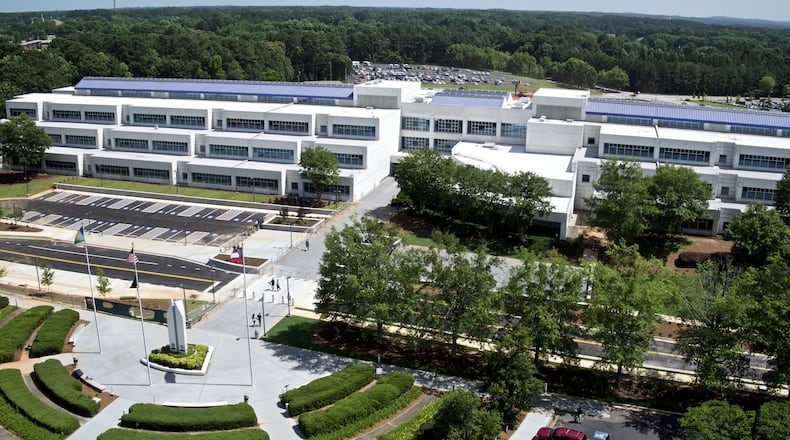Gwinnett County officials have drafted high-level plans for spending approximately $181.9 million in COVID-19 relief funds from the American Rescue Plan Act.
The county plans to spend most of the money on “equity-focused services” to help underserved areas, addressing negative economic effects of the pandemic, public health responses and recouping lost revenue.
“To ensure we are strategic and impactful, several processes have been put in place to address urgent and long-term needs,” said Board of Commission Chairwoman Nicole Love Hendrickson in a statement. “We are prioritizing county residents, with an equity-focused approach to reach our underserved residents.”
Funding allocations could change depending on needs of various programs and projects, said Finance Director Buffy Alexzulian. The county has received about $91 million of the funds, expecting the rest to come next year around May.
Officials will have until 2024 to dedicate the money for specific purposes, Alexzulian said, and until 2026 to spend it. Gwinnett County Commissioner Kirkland Carden told The Atlanta Journal-Constitution that the county needs to act urgently to prepare a specific timeline for rolling out the funds to ensure no money goes unspent.
“With such a large amount of money, we have to be sure that we are good stewards with that taxpayer money,” Carden said. “I don’t want the headline to be a couple years down the road: ‘Gwinnett County left X amount of ARPA money on the table.’”
Most of the $61 million allocated for equity-focused services will go toward expanding the Centerville one-stop center and creating an additional one in another area of the county still to be determined. One-stop centers offer a wide range of wellness and recreational services to residents under one roof.
The $17.27 million earmarked for public health response will go toward a variety of pandemic-related expenses, including continuation of vaccine sites at Eastside Medical Center and Gwinnett Place Mall, expansion of mobile clinic sites and funding COVID-19 testing and tracing.
The county also expects using some of the funds in this category for vaccine incentives, giving $100 prepaid debit cards to individuals who get vaccinated. It tentatively plans to spend $250,000 on these incentives, which would pay about 2,500 people to get shots.
Carden said more money should be allocated toward vaccine incentives. More than 2,500 people turned out at a vaccine event at The Mall at Stonecrest offering $100 prepaid debit cards.
“If you have a successful event like you had in DeKalb County, that would clean you out,” Carden said. “So I’ve been a vocal advocate in making sure we increase the money going to COVID shots.”
The county will use about $28 million to recoup revenue lost as a result of the pandemic. Tax revenue from hotels and motels declined during the pandemic, Alexzulian said, as well as fines and forfeitures when the court system briefly halted.
Nearly $39 million will be spent on addressing economic damage caused by the pandemic, including efforts to quash food insecurity, improve childhood learning and literacy, and help better childcare and transportation services.
The county expects using $10 million to support small businesses and nonprofits in regaining their financial footing. It’s still unclear how the funds for these programs will be distributed, Alexzulian said.
About $19 million will go toward infrastructure improvements — expanding broadband in underserved areas, converting septic systems to sewer, rehabilitating dams and helping residents with home repair.
Approximately $11.66 million will be used to fund incentive programs to entice new workers and reimburse the county for hazard pay doled out to essential employees.
The county sent out a needs assessment survey to nonprofits, faith-based organizations, cities and other community stakeholders to figure out how the federal funds should be allocated, Alexzulian said.
“The pandemic brought to light a number of inequities we have in our society,” Carden said. “... We have to be very intentional about our approach to relief recovery and making sure we don’t get the money out willy-nilly, but we get the money out in a thoughtful manner that helps the communities that best need it.”
About the Author
Keep Reading
The Latest
Featured




